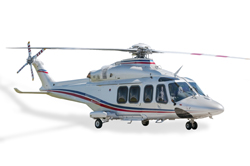The silence of taxiing rotorcraft
A move toward all-electric aircraft is an important avenue of research and in line with ambitious goals set by the Advisory Council for Aviation Research and Innovation in Europe (ACARE) for reducing the environmental impact of air transport. EU-funded scientists investigated the benefits of electrical taxiing of rotorcraft without rotor spinning within the context of the project 'Rotorcraft electric taxiing' (RETAX)(opens in new window) .Rotorcrafts generally taxi a distance of 5 to 6 km per day for movements between hangar, loading zone and take-off zone. The researchers sought to develop an autonomous solution for that task consisting of a lightweight, electrically powered motorised wheel integrated with the landing gear.Building on industry expertise in electric drive solutions for motorised vehicles and aircraft, scientists were quickly able to design and test the system. Promising results were achieved in terms of both performance and safety. Although the system creates an added weight of about 45kg, it results in fuel savings of around 240kg/day. That means a net weight reduction and an equivalent carbon dioxide savings of around 200 tonnes per year per rotorcraft. In addition, no rotor spinning during taxiing has important benefits for noise reduction and personnel safety.The RETAX demonstrator has reached a technology-readiness level of four on a scale of one to nine indicating lab validation. The next step will be validation in the industrially relevant environment. RETAX has thus made a significant contribution to future all-electric rotorcraft and to greener air transport solutions with an important technology on its way to commercialisation.



